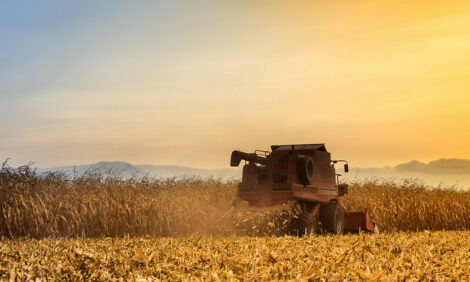



Drought Threatens Financial Well-Being of Livestock
US - Livestock producers are likely to suffer the biggest financial fallout from a drought that encompasses much of the nation. High feed prices from failed grain crops could drive some livestock producers to liquidate herds.Drought that is spreading across the country is increasing feed prices and quickly spelling financial disaster for livestock producers, Purdue Extension agricultural economist Chris Hurt says.
While crop producers face serious economic losses from reduced or non-existent yields, the lack of corn, soybean and hay crops could make the fallout even worse for milk, beef, pork, mutton, chicken, egg, turkey and duck producers.
"The first thought is crop producers will bear the brunt of the financial losses, but losses in animal industries will be enormous over the next year - perhaps considerably greater than for the crop sector," Mr Hurt said.
Unlike many crop farmers, livestock producers don't typically have any form of income protection comparable to crop insurance.
December 2012 corn futures already have risen by nearly 55 per cent, and soybean meal futures are up 24 per cent.
"These higher feed prices have to be absorbed by the animal industry, causing a collapse in financial margins," Mr Hurt said. "Higher feed costs cannot be passed on to the consumer in the short run, so animal industries have to take these losses or begin to liquidate animals."
The lack of profitability is likely to cause some livestock producers to begin liquidation immediately, with Mr Hurt predicting even more liquidation in the fall.
Increased slaughter in summer and fall will lead to a larger supply of animals, especially beef cattle, on the market. That's likely to push some livestock prices modestly lower, further narrowing any remaining profit margins.
As that supply dwindles in the long run, meat, egg and dairy product prices will increase and consumers will see higher prices at both the grocery store and restaurants.
"Animal producers ultimately do get compensation for the higher feed costs, but that comes after a prolonged period of losses that some producers can't survive," Mr Hurt said.
"Unfortunately, the profit prospects for many in the animal industries will not improve markedly until feed and forage prices can move lower with more normal crops in 2013. That means their outlook appears bleak for another 12-15 months. That is a situation where more rapid and deeper liquidation can occur."
One immediate response from livestock producers has been to seek out and cull low-productivity breeding animals, or to sell animals at lower weights.
According to Mr Hurt, the average live-hog weight has dropped from 278 pounds to 273 pounds because the drought has already caused increases in feed prices. He expects further reductions in coming weeks.
Mr Hurt said it's important for livestock producers to help make clear to consumers and policymakers the sort of extreme financial stresses they will face in the coming months.
"This articulation by the animal industries is important to alert consumers to higher retail food prices, but also to policymakers, " Mr Hurt said. "Policymakers will likely have an influence on release of Conservation Reserve Program lands for grazing and haying, on any potential disaster payments from the federal government, and in helping the Environmental Protection Agency and U.S. Department of Agriculture make decisions about the size for the 2013 Renewable Fuels Standard."
More drought information and resources are available on Purdue Extension's "IN Drought" website at http://www.purdue.edu/drought






